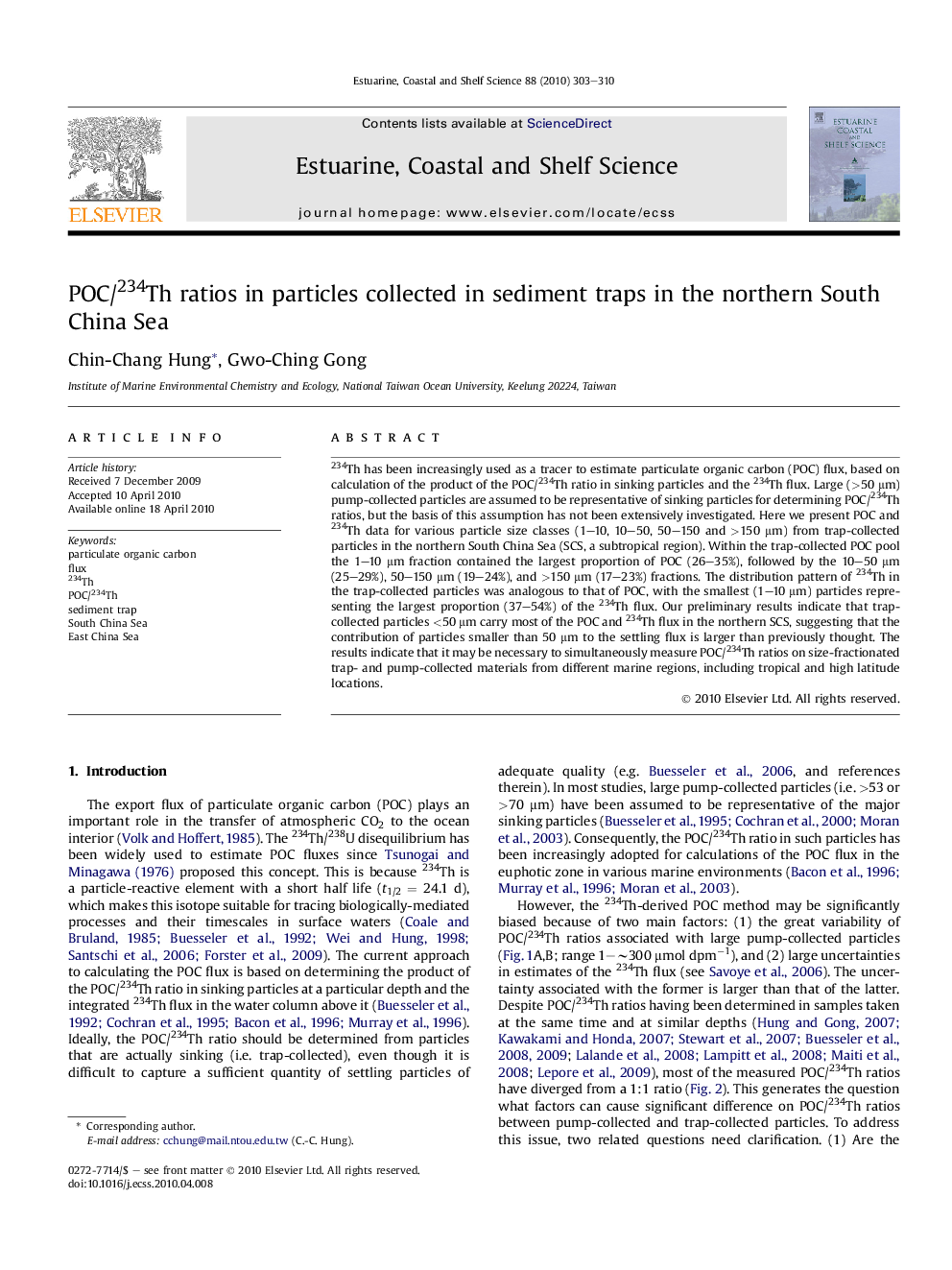| Article ID | Journal | Published Year | Pages | File Type |
|---|---|---|---|---|
| 4540820 | Estuarine, Coastal and Shelf Science | 2010 | 8 Pages |
Abstract
234Th has been increasingly used as a tracer to estimate particulate organic carbon (POC) flux, based on calculation of the product of the POC/234Th ratio in sinking particles and the 234Th flux. Large (>50 μm) pump-collected particles are assumed to be representative of sinking particles for determining POC/234Th ratios, but the basis of this assumption has not been extensively investigated. Here we present POC and 234Th data for various particle size classes (1-10, 10-50, 50-150 and >150 μm) from trap-collected particles in the northern South China Sea (SCS, a subtropical region). Within the trap-collected POC pool the 1-10 μm fraction contained the largest proportion of POC (26-35%), followed by the 10-50 μm (25-29%), 50-150 μm (19-24%), and >150 μm (17-23%) fractions. The distribution pattern of 234Th in the trap-collected particles was analogous to that of POC, with the smallest (1-10 μm) particles representing the largest proportion (37-54%) of the 234Th flux. Our preliminary results indicate that trap-collected particles <50 μm carry most of the POC and 234Th flux in the northern SCS, suggesting that the contribution of particles smaller than 50 μm to the settling flux is larger than previously thought. The results indicate that it may be necessary to simultaneously measure POC/234Th ratios on size-fractionated trap- and pump-collected materials from different marine regions, including tropical and high latitude locations.
Related Topics
Physical Sciences and Engineering
Earth and Planetary Sciences
Geology
Authors
Chin-Chang Hung, Gwo-Ching Gong,
